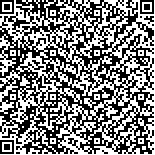本文已被:浏览 1931次 下载 3711次
投稿时间:2014-01-07 修订日期:2014-02-11
投稿时间:2014-01-07 修订日期:2014-02-11
中文摘要: 2013年秋季,东北地区气候异常特征总体表现为:气温偏高,降水总体偏多,尤其10和11月降水持续异常偏多。分析表明,西北太平洋中纬度地区暖海温外强迫和大气环流系统的组合异常是东北地区气候异常的主要原因。秋季北极涛动正位相特征显著,东北地区上空为异常正高度距平控制,环流异常形势不利于冷空气扩散南下影响东北地区,造成秋季东北地区明显偏暖。秋季中后期,东北地区降水偏多主要受西北太平洋中纬度地区异常偏强的东南风水汽输送影响。
中文关键词: 气候特征,环流异常,水汽输送,成因分析,东北地区
Abstract:During the autumn of 2013, the surface air temperature was higher than normal and the precipitation amount was above normal in most part of the Northeast China, especially from October to November. The diagnosing results show that the external forcing of higher sea surface temperature in Northwest Pacific Ocean and atmospheric circulation features, may lead to the climatic anomaly in Northeast China. The abnormal circulation pattern with obviously positive phase of Arctic Oscillation, and positive anomaly of geopotential height over Northeast China is unfavorable for cold air to move southward causing higher air temperature in Northeast China for the season. Meanwhile, in mid late Autumn, precipitation anomaly in the Northeast China is mainly influenced by the stronger southeasterly moisture transport from the western North Pacific Ocean.
keywords: climatic feature, circulation anomaly, moisture transport, causation analysis, the Northeast China
文章编号: 中图分类号: 文献标志码:
基金项目:公益性行业(气象)科研专项(GYHY201306026)和中国科学院青藏高原环境变化与地表过程重点试验室开放课题基金项目(TEL201206)共同资助
| 作者 | 单位 |
| 王朋岭 | 1 中国气象局气候研究开放实验室,北京 100081 2 中国科学院青藏高原环境变化与地表过程重点实验室,北京 100101 |
| 李多 | 1 中国气象局气候研究开放实验室,北京 100081 |
| 柳艳菊 | 1 中国气象局气候研究开放实验室,北京 100081 |
| 刘秋锋 | 1 中国气象局气候研究开放实验室,北京 100081 |
引用文本:
王朋岭,李多,柳艳菊,刘秋锋,2014.2013年秋季东北地区气候异常及成因分析[J].气象,40(4):510-514.
WANG Pengling,LI Duo,LIU Yanju,LIU Qiufeng,2014.Study on Climate Anomaly and Possible Mechanism over the Northeast China in Autumn 2013[J].Meteor Mon,40(4):510-514.
王朋岭,李多,柳艳菊,刘秋锋,2014.2013年秋季东北地区气候异常及成因分析[J].气象,40(4):510-514.
WANG Pengling,LI Duo,LIU Yanju,LIU Qiufeng,2014.Study on Climate Anomaly and Possible Mechanism over the Northeast China in Autumn 2013[J].Meteor Mon,40(4):510-514.

